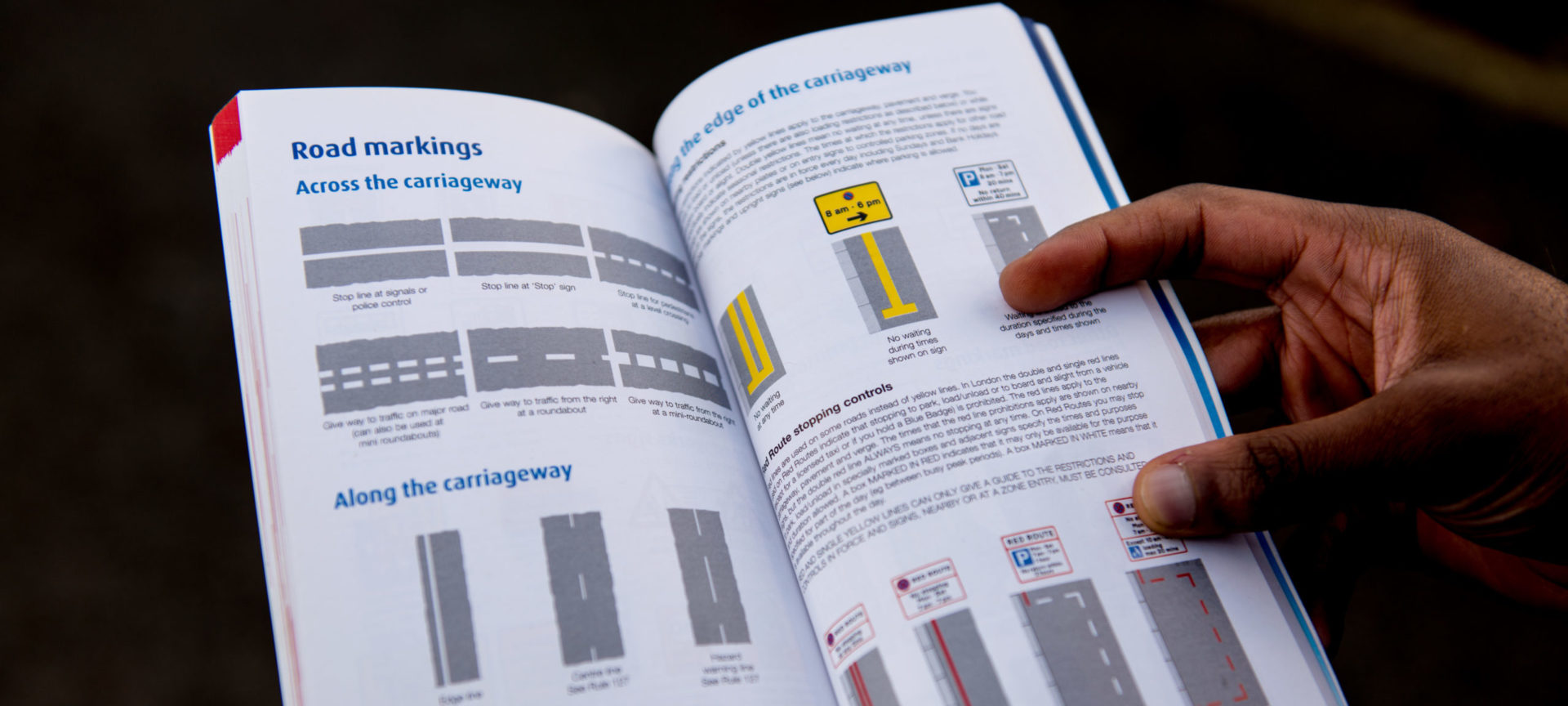Before you can move on to the practical test, you need to pass the theory exam. Once you have your theory test pass certificate, you’ll have taken a big step towards your full driving licence.
What is the theory test?
It tests you on the rules of the road before you take the practical driving test. All provisional licence holders need to pass the theory test before booking a practical test.
You’ll be tested on your knowledge of the rules of the road, to show you understand how to be a safe and responsible driver. The test is in two parts. There’s a multiple-choice test, and a hazard perception test.
Multiple-choice section
To pass this part, you need to answer 43 out of 50 questions correctly. There will be a time limit of 57 minutes. As the test is completed digitally, you will get an opportunity to practise on a few sample questions before the exam begins.
Hazard perception test
Before you start the hazard perception test, you’ll be shown a video about how it works. You’ll then watch 14 video clips, all around a minute long. There will be 15 hazards to spot, and at least one in every video.
The clips feature everyday road scenes and contain at least one ‘developing hazard’ – but one of the clips features two developing hazards. You get points for spotting the developing hazards as soon as they start to happen.
A developing hazard is something that would cause you to take action, like changing speed or direction. For example, a car is parked at the side of the road and is not doing anything. It would not cause you to take action, so it’s not a developing hazard.
But, when you get closer, the car’s right-hand indicator starts to flash, and it starts to move away. You’d need to slow down, so it’s now a developing hazard.
You can score up to five points for each developing hazard. To get a high score, click the mouse as soon as you see the hazard starting to develop. You do not lose points if you click and get it wrong. Don’t just click like crazy, as you’ll score ‘zero’ if you do that. You only get one attempt at each clip. You cannot review or change your responses.
You click on a mouse button when you spot a hazard – the quicker you notice potential danger, the higher the score.
To pass this part, you need to get a minimum of 44 of the 75 points available.
How hard is it to pass?
Don’t make the mistake of thinking you can bluff your way through it. It takes a lot of study to fully get to grips with the Highway Code, and to learn how to spot hazards early. Just 47% of candidates pass the test, so it’s more likely that you will fail than pass first time. You need to score at least 43 out of 50 in the multiple-choice test, and 44 out of 75 for the hazard perception exam. You need to succeed in both elements to earn that all-important pass certificate.
Where do I take the test?
You sit the test at a local DVSA test centre.
How much does it cost?
The fee is £23. You can book online at www.gov.uk/book-theory-test
What can I do to have the best chance of passing?
Now that’s a sensible question! Practise, practise, practise. Firstly, we’d recommend you making full use of any theory test learning aids your driving instructor has. They may be included in the cost of your lessons or available for a small extra fee. You may choose to read The Highway Code and/or The Official DVSA Theory Test for Car Drivers thoroughly, not just once but again and again, and test yourself on the contents.
There are free practice tests online at www.gov.uk/take-practice-theory-test. The questions won’t be the same as those you’ll be asked in the real thing, but they cover the same topics. There’s a range of apps to help you pick up the theory of driving, and get quicker at spotting hazards, so it makes sense to use them. They don’t cost much and one of the best is The Official DVSA Theory Test Kit because this was created by the same people who set the theory and practical driving tests. You’re not going to find a more useful app and at £4.99 it’s a bargain.
What next?
Fail, and you’ll have to reapply to take the test again. Pass, and the practical test is your next step.
Five ways to improve your hazard perception
Spotting hazards isn’t just important when you take your theory test, it’s a vital part of safe driving.
- Think about it whenever you drive
Don’t treat hazard perception as something that’s separate to the rest of your learning. Yes, you’re going to be tested on a computer, but you’ll learn more quickly if you practise spotting hazards every time you drive. The goal is to spot danger and stay safe on the road, not just to pass a test.
- Talk out loud
The most advanced police drivers are taught to give a running commentary as they drive. Talking about hazards while driving forces you to concentrate on potential dangers, rather than running on autopilot. Saying out loud what you see – and how you are going to respond – makes sure the brain is fully engaged with driving, and helps you learn to process lots of information at once. If you are giving a commentary as you drive, there’s no mental capacity left to wonder what’s for dinner or to think where you will go out on Friday night.
- Practice makes perfect
Well, maybe not perfect but good enough to pass the theory test. Take lots of mock hazard perception tests before you tackle the real thing. That way you’ll know what to expect and will be able to sharpen your skills. There are loads of them online and they’re often free.
- Understand the difference between a static and developing hazard
Broadly speaking, there are two kinds of hazards. ‘Static’ hazards are things like roundabouts, traffic lights and junctions. You need to deal with them on every journey, but a roundabout isn’t going to suddenly jump out at you from behind a parked car. ‘Developing’ hazards are mobile and tougher to predict. Such hazards include a car pulling out in front of you, a child running into the street, or a cyclist getting ready to turn right. The sooner you spot a developing hazard, the sooner you can respond. Think about it this way – if you see a football roll into the road in front of you, it’s better to slow down straight away rather than wait for a kid to follow it.
- Remember there can be more than one hazard
Every video in the hazard perception test shows at least one hazard. But just to keep you on your toes, one of the 14 videos has two hazards. So, don’t switch off after you have spotted the first hazard. There could be another one appearing at any moment.

